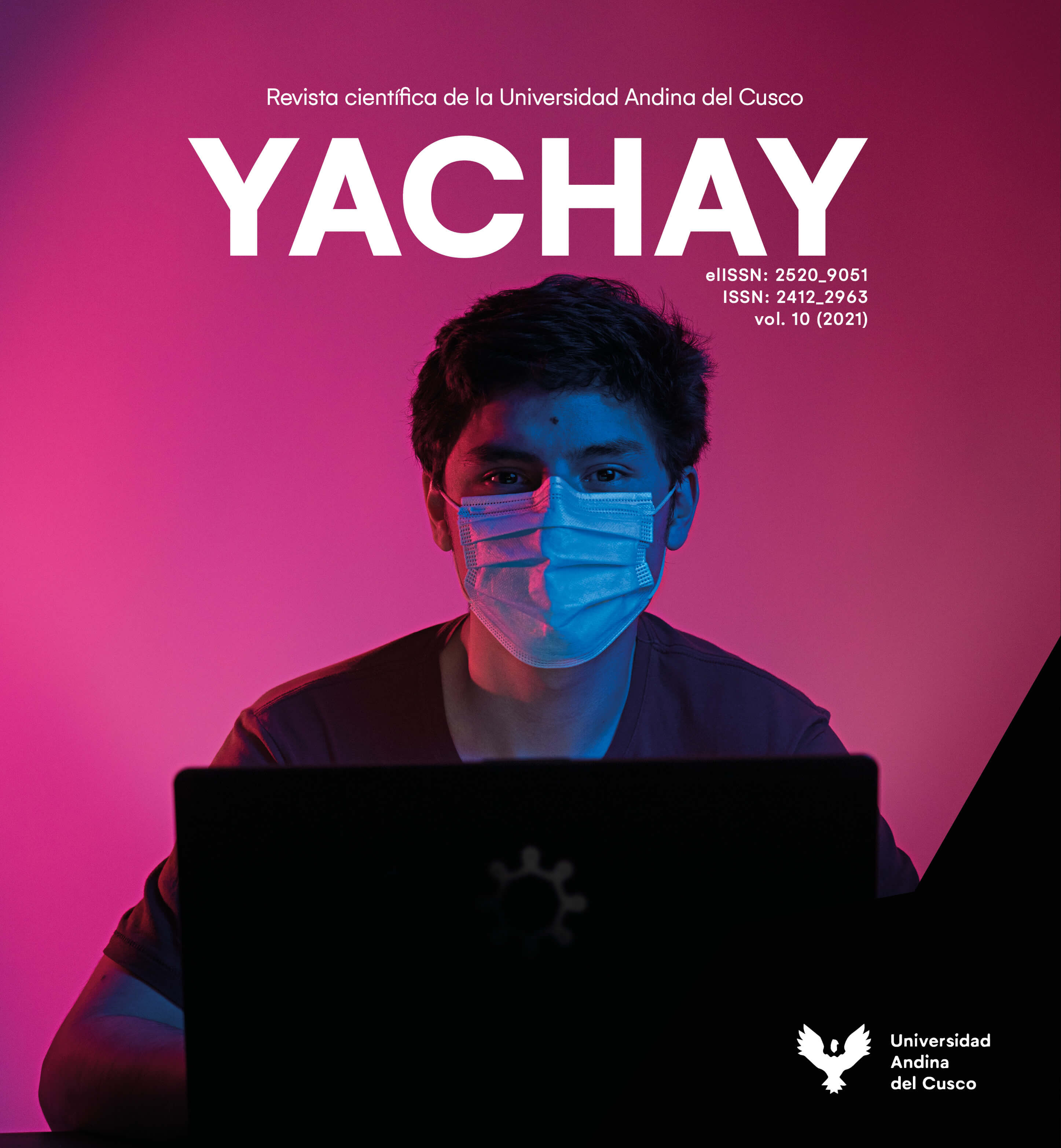Análisis de patrones de puntos espaciales: Una aplicación al Covid-19 en el Perú
DOI:
https://doi.org/10.36881/yachay.v10i1.268Palabras clave:
estadística espacial, patrones espaciales, asociación espacial, Covid-19Resumen
En diciembre del 2019 la enfermedad del Covid-19 emergió de la provincia de Wuhan, para luego extenderse por todo el mundo, el Perú no ha sido la excepción. Este trabajo tiene como objetivo principal estimar los patrones espaciales del Covid-19 en el Perú, además de establecer clusters a nivel regional. Mediante técnicas de estadística espacial se encontró asociación espacial mediante el índice de Moran (I Moran) global de 0.056 (p<0.05). Por otro lado, se estableció cuatro clusters: en primer lugar, regiones al norte del país donde hay más casos, el sur donde hay menores cifras y clusters formados por outliers como Lima y Callao.
Descargas
Citas
Anselin, L. (1996). ) The Moran scatterplot as an ESDA tool to assess local instability in spatial association. En M. Fischer, H. Scholten, & D. Unwin, Spatial Analytical perspectives on GIS (pág. 111.125). London: Taylor and Fracis.
Anselin, L., & Forax, R. (1995). New Directions in Spatial Econometrics. Verlag: Springer.
Arashi, M., Bekker, A., Salehi, M., Millard, S., Erasmus, B., Cronje, T., & Golpaygani, M. (2020). Spatial analysis and prediction of COVID-19 spread in South Africa after lockdown. https://arxiv.org/abs/2005.09596.
Bayes, C., Sal y Rosas, V., & Valdivieso, L. (2020). Modelling death rates due to COVID-19: A Bayesian approach. https://arxiv.org/abs/2004.02386.
Bivand, R. (1992). SYSTAT-compatible software for modeling spatial dependence among observations. Comput Geosci, 951–963.
Bivand, R., Pebesma, E., & Gómez-Rubio, V. (2013). Applied Spatial Data Analysis with R. New York: Springer.
Chen, Y. (2013). New Approaches for Calculating Moran’s Index of Spatial Autocorrelation. PLoS ONE 8(7): e68336. https://doi.org/10.1371/journal.pone.0068336.
Cliff, A., & Ord, K. (1981). Spatial Processes: Models & Applications. London: Pion.
Cressie, N. (1992). Statistics for spatial data. New York: Wiley interscience publication.
Ebdon, D. (1977). Statistics in geography: A practical approach. Oxford: Wiley-Blackwell.
Fanelli, D., & Piazza, F. (2020). Analysis and forecast of COVID-19 spreading in China, Italy and France. Chaos, Solitons and Fractals, 1-5.
Geary, R. (1954). he contiguity ratio and statistical mapping,. The Incorporated Statistician, 115–145.
Getis, A., & Ord, J. (1996). Local spatial statistics: An overview. En P. Longley, & M. Batty, Spatial Analysis: Modeling in A GIS Environment (págs. 261-277). New York: John Wiley & Sons.
Giuliani, D., Dickson, M. M., Espa, G., & Santi, F. (2020). COVID-19, Italy, epidemiology, diffusion model, spatio-temporal diffusion models. Disponible en: https://papers.ssrn.com/sol3/papers.cfm?abstract_id=3559569.
Gozzer, E., Canchihuamán, F., & Espinoza, R. (2020). COVID-19 y la necesidad de actuar para mejorar las capacidades del Perú frente a las pandemias. Revista Peruana de Medicina Experimental y Salud Pública.
Herrera, M., Paz, J., & Cid, J. (2012). Introducción a la Econometría Espacial. Una Aplicación al Estudio de la Fecundidad en la Argentina usando R. MPRA, 1-30.
Huang, R., Liu, M., & Ding, Y. (2020). Spatial-temporal distribution of COVID-19 in China and its prediction: A data-driven modeling analysis. The Journal of infection in Developing Countries.
Kim, J.-H., Choi, J., Kang, D., & Choi, H. (2020). Spatial epidemic dynamics of the COVID-19 outbreak in China. International Journal of Infectious Diseases.
Matel, N. (1967). he Detection of Disease Clustering and a Generalized Regression Approach. Cancer Research,, 209-220.
MINSA. (2020). Situación actual "Covid-19" al 18 de Abril 2020. Lima: Ministerio de Salud.
Moran, P. (1950). Notes on Continuous Stochastic Phenomena. Biometrika, 17-23.
Murat Yüceşahin, M., & Sirkeci, I. (2020). Coronavirus and Migration: Analysis of Human Mobility and the Spread of COVID-19. Migration Letters, 379-398.
Topler, W. (1970). A Computer Movie Simulating Urban Growth in the Detroit Region in the Detroit Region. Economic Geography, 234-240.
Zhang, X., Rao, H.-X., Wu, Y., Huang, Y., & Dai, H. (2020). Comparison of the spatiotemporal characteristics of the COVID-19 and SARS outbreaks in mainland China. medRxiv.
Archivos adicionales
Publicado
Cómo citar
Número
Sección
Licencia
Usted es libre de:
- Compartir — copiar y redistribuir el material en cualquier medio o formato
- Adaptar — remezclar, transformar y crear a partir del material
- El licenciador no puede revocar estas libertades mientras cumpla con los términos de la licencia.
Bajo las condiciones siguientes:
-
Reconocimiento — Debe reconocer adecuadamente la autoría, proporcionar un enlace a la licencia e indicar si se han realizado cambios<. Puede hacerlo de cualquier manera razonable, pero no de una manera que sugiera que tiene el apoyo del licenciador o lo recibe por el uso que hace.


















